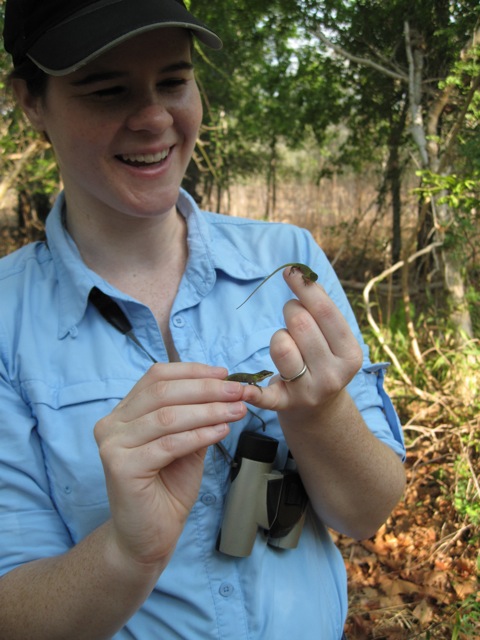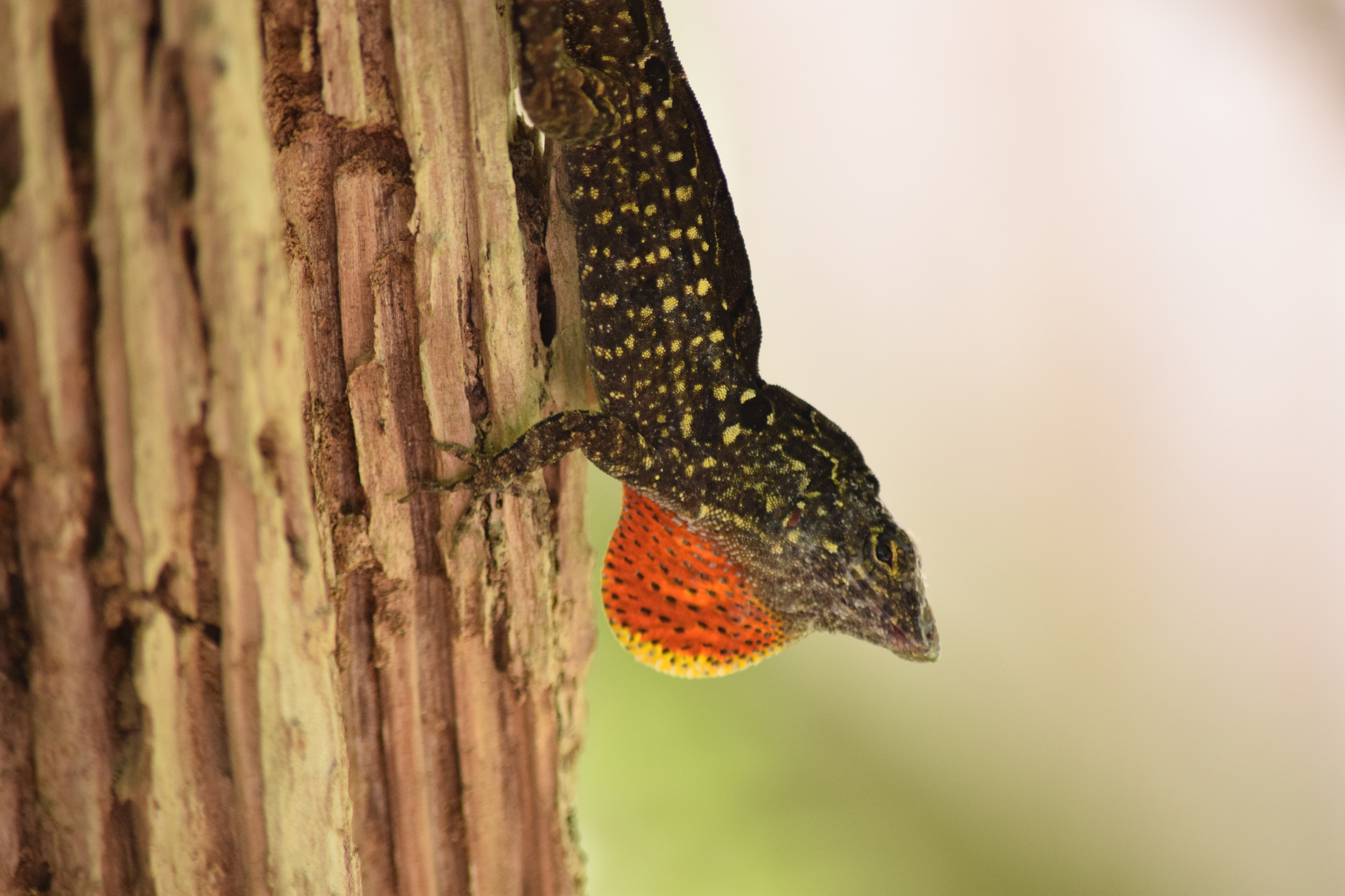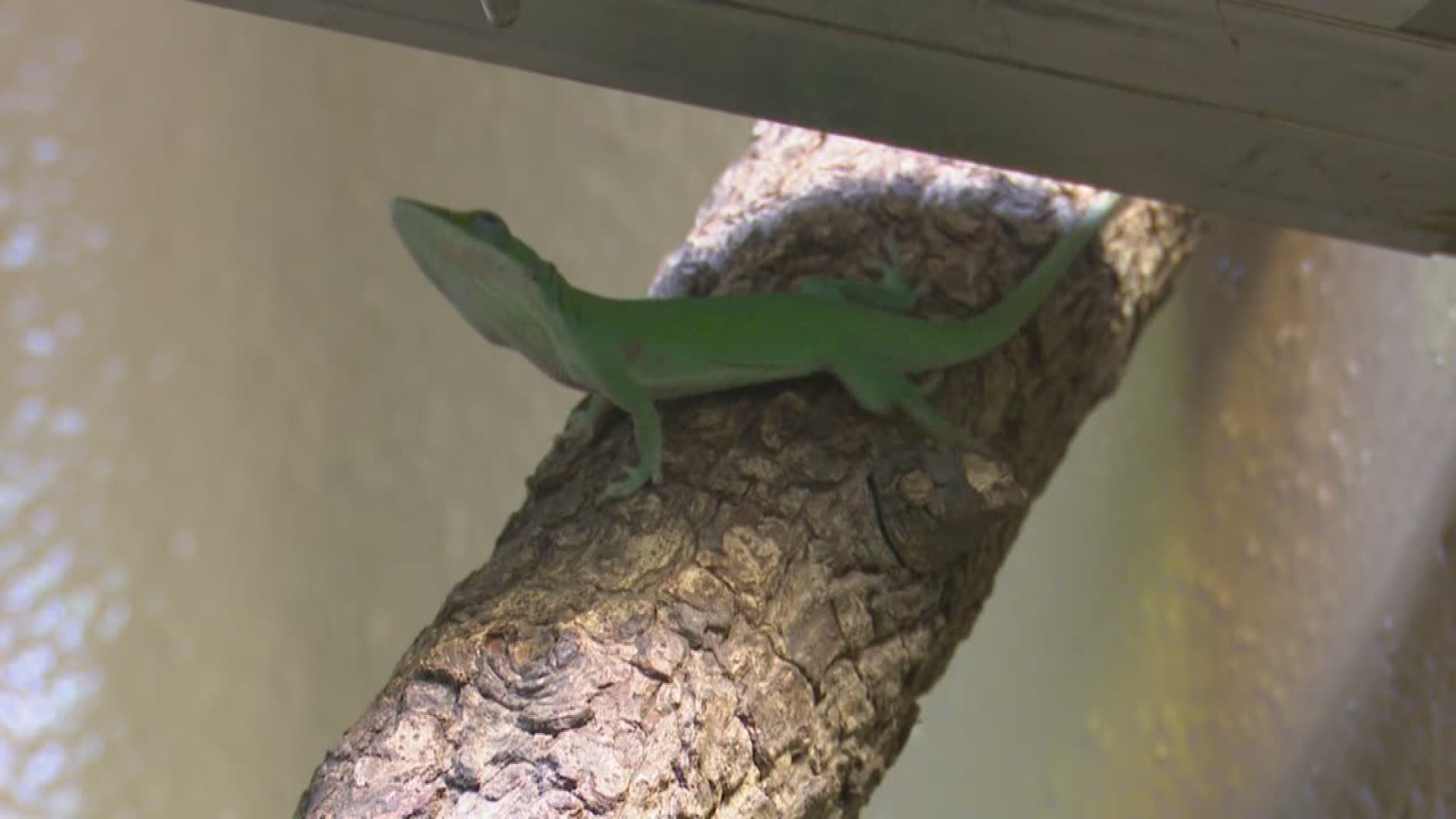Where are all the green anoles? That’s a question an Humble resident asked on Reddit, writing, “Usually by this time in the summer, my backyard is SWARMING with them. I don't think I've seen even one this season. Does anyone know what the deal is?”
KHOU 11 checked in with Dr. Michele Johnson, an associate professor of biology at Trinity University, who’s studied anoles for 15 years. She says green anoles are the only one of about 400 kinds of anoles that is native to Texas.

Johnson offered a couple different suggestions about what might be to blame for fewer visible green anoles. The first possible offender: a new neighborhood predator.
“We know that domestic cats, our pets, can kill many, many birds, mammals and lizards,” Dr. Johnson said. “They do so indiscriminately, whether they’re hungry or not.”
From being eaten to what they eat; changes in your yard could be to blame too. Green anoles eat bugs, so if you’ve sprayed pesticide or let your lawn dry up, they’ll move on to literally greener pastures.

The final possibility is an unwanted visit from a distant relative: Cuba’s brown anole, an invasive species.
“Brown anoles and green anoles are fighting for territory in Louisiana and they’ve arrived in Texas, particularly along the coast, but also along the highways,” said Dr. Johnson.
When they arrive, the brown anoles start making themselves right at home, eating up all the bugs and even green anole eggs and the lizards themselves. To avoid their rude relatives that perch lower, green anoles go up higher, out of danger and out of our view.
“The green anoles might be harder to see even if they’re still there,” said Dr. Johnson.
To learn more about the green and brown anoles, you can visit Dr. Johnson’s website LizardsAndFriends.org.

